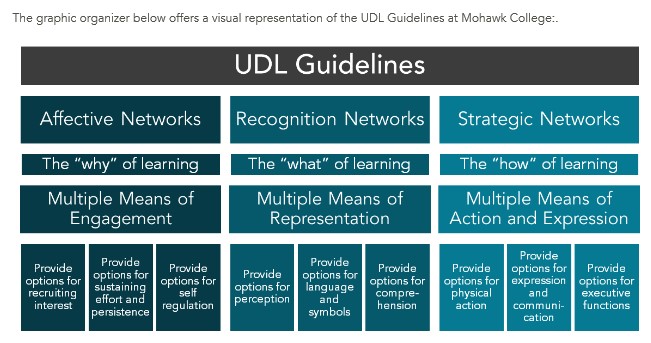Universal Design for Learning (UDL) is a research-based framework for designing curricula—that is, educational goals, methods, materials, and assessments—that enable all individuals to gain knowledge, skills, and enthusiasm for learning. This is accomplished by simultaneously providing rich supports for learning and reducing barriers to the curriculum, while maintaining high achievement standards for all students.
What is Universal Design for Learning?
Universal design for learning (UDL) is a curriculum design. development and delivery framework used to create accessible and inclusive learning environments. UDL guidelines are based on three primary brain networks:
- Affection
- Recognition
- Strategic
Each network is identified by a principle to guide design, development and delivery in practice:
- Multiple means of engagement
- Multiple means of representation
- Multiple means of action and expression
Each network contains three checkpoints (nine in total) that emphasize learner diversity that could either present barriers to learning or opportunities for greater engagement. The checkpoints are as follows:
Multiple Means of Engagement
- Options for self-regulation
- Options for sustaining effort and persistence
- Options for recruiting interest
Multiple Means of Representation
- Options for comprehension
- Options for language, math and symbols
- Options for perception
Multiple Means of Action and Expression
- Options for executive functions
- Options for expression and communication
- Options for physical action
Principles of UDL

Assessment and Rubric Examples
Example 1 – Mohawk College
Example 2 – Mohawk College
UDL Video Resources
How do we make education more accessible with Kari Kumar, UOIT Lecturer
